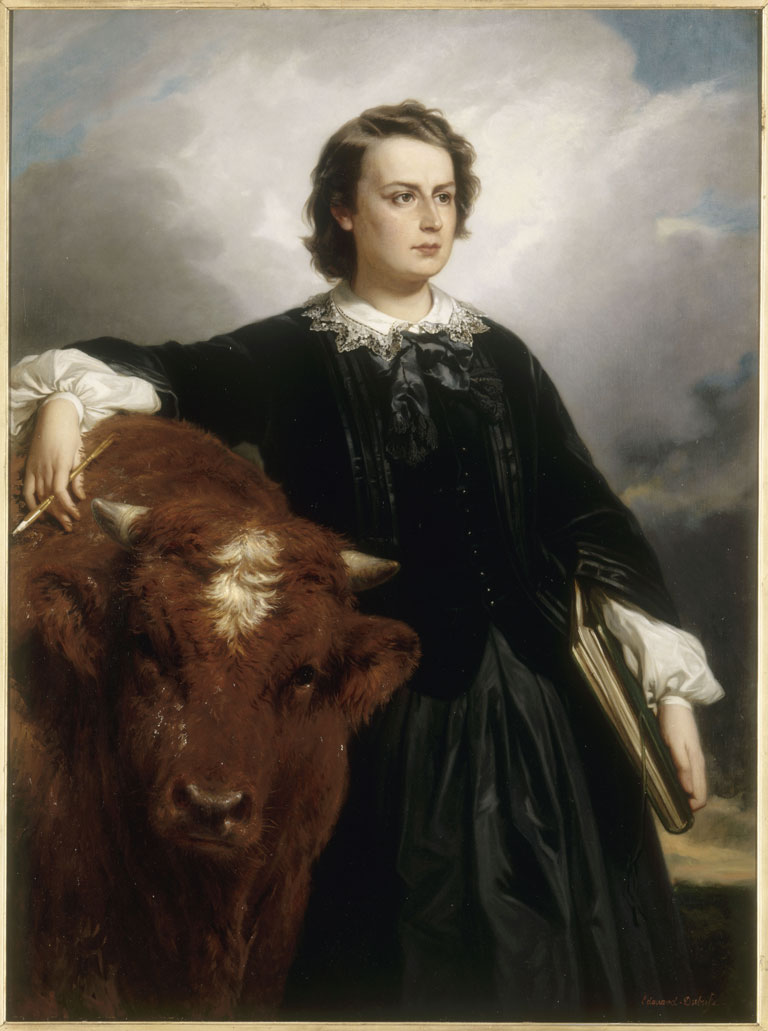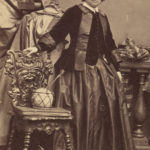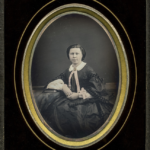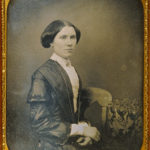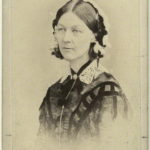painter Rosa Bonheur with Bull by Édouard Louis Dubufe, 1857
At the time that Bonheur became an artist, women generally were only reluctantly given opportunities for education as artists. She represented a “New Woman” of the 19th century, with liberal sexual ideas and by becoming a successful artist, showed what she “could do in the matter of energy, continuity of purpose, methodical and intelligent labor, and, in a word, in that indispensable quality, inspiration, which gives an impetus to art.”
Artwork made by women was considered to be inferior, and to help overcome that stereotype, the women artists became “increasingly vocal and confident” in promoting women’s artist’s work, and thus became part of the emerging image of the educated, modern and freer “New Woman”.
Bonheur was known for wearing men’s clothing, her choice of companions and her penchant for smoking cigarettes. On her wearing of trousers, she said at the time that her choice of attire was simply practical (see Rational dress) as it facilitated her work with animals: “I was forced to recognize that the clothing of my sex was a constant bother. That is why I decided to solicit the authorization to wear men’s clothing from the prefect of police. But the suit I wear is my work attire, and nothing else. The epithets of imbeciles have never bothered me….” She lived for over forty years with her childhood friend Nathalie Micas. In the final year of her life she became close with Anna Klumpke, the author of her “autobiography”.
Via: WikiCommons

